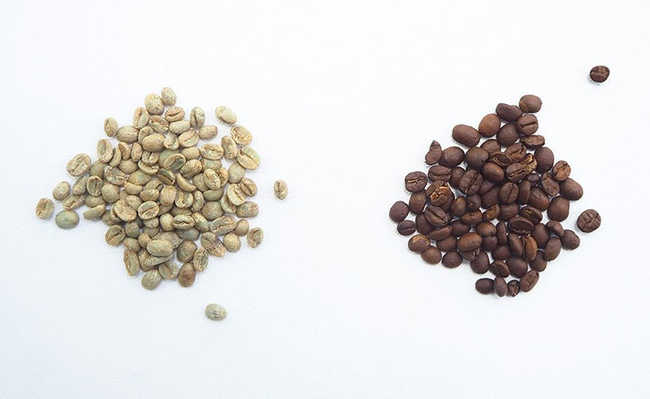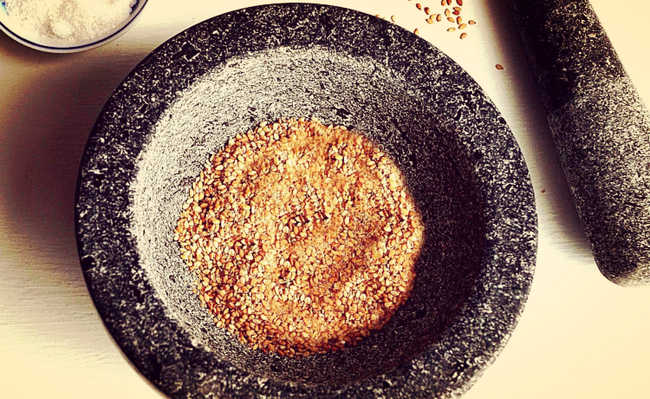Hygiene theory: when cleaning is no longer synonymous with health
Hygiene theory states that over-cleaning can cause allergic diseases

Rawpixel resized image, is available in Unsplash
The hygiene theory, also known as the hygiene hypothesis or hygiene theory, emerged in the 70s and 80s of the 20th century, when the number of cases of people with allergic diseases started to grow, leading to a series of scientific investigations. One of the hypotheses was the occurrence of some type of environmental change, as the increase in occurrences occurred very fast, which ruled out the possibility of genetic change.
First formulated in 1989 by epidemiologist Dr. Strachan, the theory of hygiene relates the increased susceptibility of allergic diseases to people who were not exposed during childhood to pathogens, such as microorganisms or parasites, thus making them predisposed to develop proneness to allergies - the immune system of individuals was not properly stimulated in the first years of life.
Causes
According to the hygiene theory, living with non-aggressive microorganisms, naturally present in the environment in the past, helped in the modulation of the human body's immune responses, since this contact in the early stages of development prevents exaggerated immune responses to foreign substances throughout of life.
The human body's immune response against infectious threats (viruses, bacteria and helminths) is managed by lymphocytes (defense cells) TH1 and TH2. When microorganism infections occur early in life, these responses are generated by these lymphocytes. Therefore, they are essential for maintaining the balance of pro-allergic responses of TH2 cells, as this usually occurs through the maturation of TH1 cells. Therefore, exposure to pathogenic microorganisms in childhood stimulates the immune system and protects the individual against the development of allergies.
To explain better, the decrease in contact of children with different pathogens causes an imbalance between TH1 and TH2, as this attitude prevents the manifestation of acute diseases, inhibiting the action of TH1 lymphocytes, and thus favoring the activation of TH2 lymphocytes. A dysregulated immune response may be responsible for the manifestation of atopy (predisposition to develop asthma, allergic rhinitis and atopic dermatitis).
Factors for its foundation
The exploration of the concept of hygiene theory generated several studies. It is believed that the increase in the number of cases of allergic diseases is due to increased hygiene (personal or public) and the consequent decrease in the number of infectious diseases in industrialized countries. In this hypothesis, several factors are attributed that may have contributed to the change in microbiological exposure, such as a decrease in the number of people per family, antibiotics, less breastfeeding time, sanitation, availability of water and clean food and the change in rural life for urban life.
Bed-sharing when you are a child, which is more likely to occur in large families, leads to greater exposure to microorganisms and, according to studies, produces a protective effect against atopy.
Attending day care centers is also an attitude that would help to validate the hypothesis, since living in day care makes the child more likely to get common colds. As reported by the Tucson Children's Respiratory Study, children who attended day care in the first six months of life or had one or more siblings showed a low level of development of asthma.
Not to mention that the use of antibiotics "cleans" the intestine, since their use in the first years of development can influence the bacterial colonization of the intestine, also eliminating bacteria that help the body. A study of laboratory rats, proposed by Bjőrkstén, showed that antibiotic-induced changes in the gastrointestinal tract can affect how the immune system responds to common allergens in the lungs. However, its use has not been shown to be associated with the appearance of atopy, but with the appearance of eczema.
Breastfeeding also provides a protective effect against infections, mediated by the transfer of maternal antibodies and components that affect the child's intestine, proving to be an important factor in validating the theory. In a study carried out in Canada with children aged one to two years, it was observed that children breastfed only up to nine months had a greater risk of developing asthma than children breastfed for a longer period.
Changes in public hygiene, such as improvements in sanitation and in the quality of water and food, were designed to reduce human contact with pathogens, but they also altered our contact with benign bacteria such as environmental mycobacteria.
Rural life also contributes to the reduction of atopy, having a greater contribution if this way of life involves living with animals and/or agriculture. In the 16-year serological survey and questionnaire by Gassner-Bachman and Wuthrichm, it is shown that children of farmers have fewer atopic diseases and lower levels of seroprevalence for a wide range of allergens, while children with sporadic contact with nature obtained intermediate levels .
What's the conclusion?
Many studies support this theory through research showing a causal link between the sharp increase in allergic diseases in recent years since the 1970s and 1980s and the reduction in the level of exposure to microbes. However, there are contradictory studies regarding the hypothesis, making the evidence inconclusive.
Popular interpretations such as “dirt is good for us” are dangerous and contribute to the public's loss of confidence in home hygiene. It is important to make evident concepts such as the difference between “dirt” and “germs” and “cleaning” and “hygiene”, in order to better understand the type of positive and negative exposures to which one is subject.
Without knowing the nature of microbial exposure that can be critical for immune dampening, it is difficult to reformulate hygiene policy in favor of improving immune function without compromising protection against infectious diseases. The selective segmentation of microbial exposure is a very complex process, with, for example, up to 109 mycobacteria per liter in untreated water, making it difficult to preserve "friendly" species by removing those that can cause disease.
An option that is already being researched is an attenuated vaccine, containing "right" types of microbes (such as saprophytic mycobacteria), since, with vaccine applications, there are no conflicts with hygiene. There is already evidence of efficacy of this type of vaccine in animal studies and in some human trials.
To reduce the risk of allergy in children, it is likely that the individual undergoes therapy, where he is exposed to high or chronic doses of the allergen, helping in inducing tolerance of germinal center maturation. If the patient is exposed to low, sporadic and intermittent amounts of the allergen, this will increase their allergic reaction, due to lack of memory B. In adults the immune system is "untrained" and already sensitized by foreign substances, the solution will be to avoid contact with allergens and treat their symptoms.
Although the hypothesis is not conclusive, it provides strong support for initiatives that seek to improve hygiene practice. Whatever the reality of atopy and microbial exposure, "targeted hygiene" must be applied. Targeted hygiene is based on the selective intervention of when and where the risks of infection are greatest, seeking to protect when there is a maximization of harmful effects, but exposing itself to microbes with beneficial effects in our human and natural environment.
Alternatives for everyday life
Much has been said about how excessive hygiene can harm your body and that it is necessary to pay attention to the practice of targeted hygiene. But how to do this without compromising protection against harmful agents? One way is to look for alternative products (like those found in our store)!
Brazil is considered one of the countries with the highest consumption of personal care products, and a large part of them is made up of antibacterial products. They are sought after as a justification for eliminating bad odors and preventing stains on clothes, reducing sweating. However, what is not noticed is that, with the use of a bactericidal deodorant, there will be greater resistance of bacteria in the armpits, intensifying the odor before naturally exhaled, making the user always need to use that product and in greater frequency/quantity, in order to even make the initial problem worse.
In our personal hygiene there are many bactericidal products that eliminate beneficial bacteria to our body and make others more resistant, not only harming our health, but also making us hostage to these products. Few people are aware of the risks they run when using these products and the environmentally friendly alternatives we have available (such as using organic and vegan deodorants, and using baking soda to remove stains).
Most of the soaps (bars, liquids, bactericides), toothpastes, deodorants, antiseptics and perfumes on the market contain a substance called triclosan (learn more about it in the world: "Triclosan: Unwanted omnipresence"). This substance is considered a polychlorinated diphenyl ether (PBDE), capable of inhibiting the development of fungi, viruses and beneficial bacteria at low concentrations and killing these organisms at high concentrations. This substance is also related to resistance to pathogens, its use will bring resistance to antibiotics, harming your health.
- Antibacterial soap: health hazard
In addition to the harm to human health, some studies indicate that this substance is also harmful to the environment. In aquatic environments, there is deregulation of the endocrine system, through changes in thyroid hormone levels, in addition to bioaccumulate in the body of these species (which can cause human intoxication through consumption).
- What are endocrine disruptors and how to avoid them
Avoid the use of bactericidal products that contain other substances harmful to health found in most cosmetics and hygiene kits (to learn more about this topic, check the article: "Know the main substances that should be avoided in cosmetics and health care products hygiene"), seeking to balance directed hygiene with the use of more ecological products for your hygiene and for cleaning your home, in a way that does not harm your health or the environment.
Watch a video with the allergist and immunologist, Wilson Rocha Filho, explaining the hygiene theory and its evidence.










